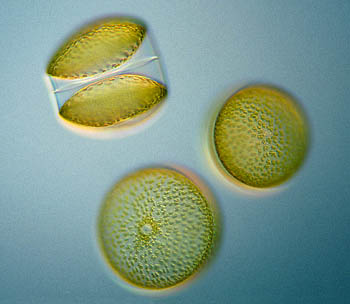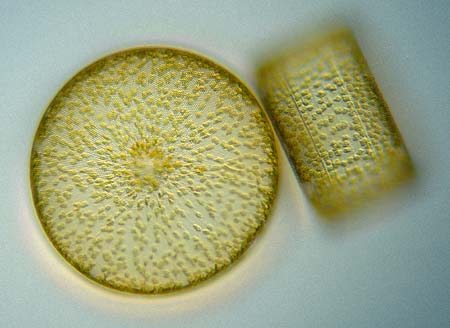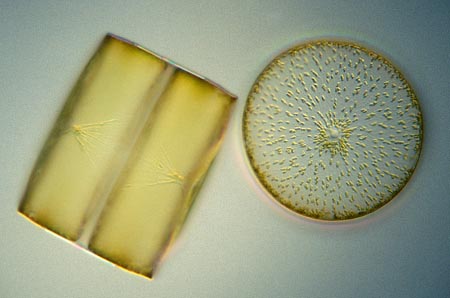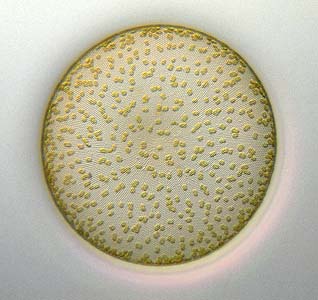| At
the height of the phytoplankton bloom in April/May it is easy to see if
the catch was successful since the sample will be yellow-brown because
of the enormous quantities of diatoms. During winter it is much more difficult
to see if it is a good catch.
But
there are some diatoms that are quite big. In this article I like to show
one of those big diatoms, of the genus Coscinodiscus. Not all species
are big but some can be more than half a millimeter in diameter. (Diatoms
of the related genus Ethmodiscus can even be 2 millimeter!).
So
when you are shortsighted like I am, you can spot these diatoms with the
naked eye when observing a plankton catch in a jar.
So
it is quite easy to pick up a couple of these diatoms with a pipette and
transfer them onto a slide for further examination under the microscope.
|



